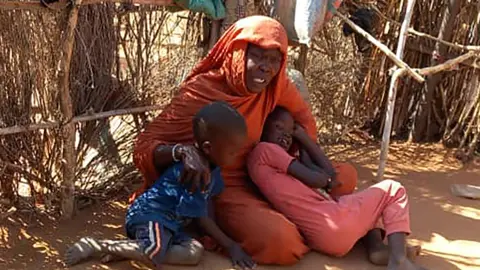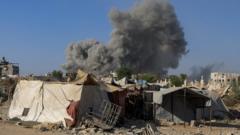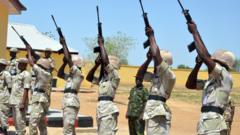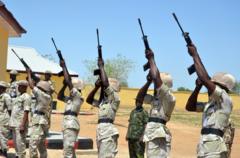Amid an unsettling resurgence of anti-immigrant violence, Northern Ireland finds itself echoing past shadows of fear and sectarianism. An alarming series of confrontations has erupted over the past month, where flames have consumed homes and effigies, prominently featuring immigrants, have raised tensions reminiscent of the region’s infamous Troubles.
The current wave of unrest bears a striking resemblance to the violent events that characterized Northern Ireland’s tumultuous past. Historically, fire served as a weapon of intimidation, employed by factions to drive out those deemed 'outsiders.' Today, the threats target a vulnerable demographic: migrant families, who have become scapegoats amid rising xenophobic sentiment.
At the center of this upheaval is Ballymena, a town steeped in Protestant tradition, which recently witnessed riots following the arrest of two local boys accused of a serious crime. The initial peaceful vigil for the victim devolved into chaos, with rioters directing violence towards the local Roma community over several consecutive nights. This unprecedented wave of aggression has led to families being displaced into temporary housing for their safety, a stark reminder of the region’s volatility.
Experts emphasize an unsettling societal pattern. Duncan Morrow, a professor at Ulster University, notes that territorialism remains deeply entrenched in Northern Ireland, patrolled by various factions. This demographic insecurity fuels a dangerous cocktail of violence and tribalism, echoing the memories of retaliatory sectarian conflicts.
Northern Ireland’s ongoing struggles with its identity and the visibility of immigration have revived historical tensions. Dominic Bryan from Queens University highlights that the dynamics resembling 1969—when sectarian violence mainly targeted Catholic communities—now pivot towards immigrant families as they navigate life in a largely homogenous society.
Recent events have uncovered underlying criminal machinations. While authoritative bodies have not confirmed ties to dissident Loyalist paramilitary activity, they acknowledge suspicious online mobilizations surfacing parallel to contemporary unrest. The resurgence of aggression towards migrants aligns with an unsettling celebration of nativist rhetoric, as demonstrated during a Unionist bonfire atop which an effigy of a migrant boat was ignited just weeks ago.
These tragic scenes shed light on Northern Ireland’s precarious psyche—a society still grappling with its legacy of division. Observers note that, even as peace has fundamentally changed the landscape since the Good Friday Agreement, spectres of violence linger just below the surface, awaiting the right provocation.
As this new chapter unfolds, Northern Ireland’s engagement with its past poses crucial questions about belonging and acceptance within its communities, exposing the urgent need for dialogue and healing in a region that has endured too much suffering.





















